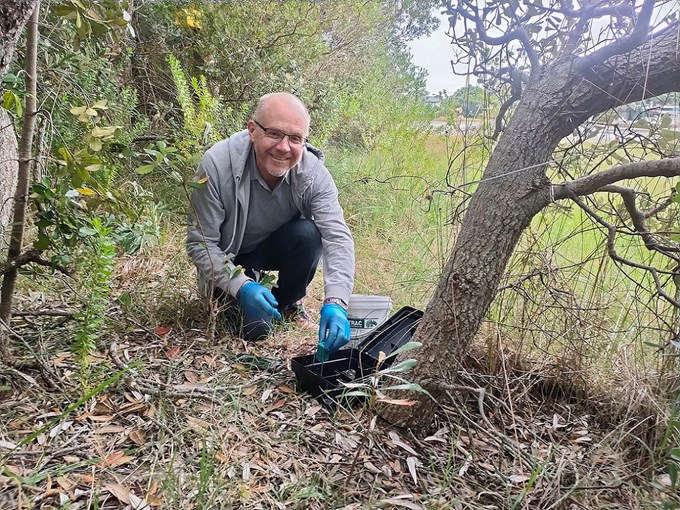The call has gone out for neighbours to band together and eradicate animal predators in the Long Bay-Awaruku catchment area, which borders Long Bay-Okura Marine Reserve and Long Bay Regional Park.
Awaruku Predator Project’s Community Catchment Activator Simon van den Berg follows a plan that maps out predator control lines in Awaruku and sets up neighbourhood clusters to maintain traplines on private properties using the pulse method of pest eradication.
“Although the project is still in the early stages, we have already completed the bait pulse for April and installed four new traplines with more lines coming over the next few months.
“This puts us in a great position as our next bait pulse is several months away in August. That gives us time to recruit and train more volunteers because as the saying goes ‘many hands make light work’.”
“If you want to give back to your community, love the area you live in and want to get to know more people, then come and volunteer with us.”
The project fits under the Restore Hibiscus & Bays umbrella, a community-led initiative supported by Hibiscus and Bays Local Board, which brings together individuals, community groups and organisations involved in pest eradication, restoration of native habitats and water quality improvements in the local board area.
Restore Hibiscus & Bays Manager Kelly Meikle says the Awaruku project is the first stage of a predator eradication programme to suppress predator populations in the catchment areas of Waiwera, Long Bay-Awaruku and Taiaotea-Rothesay Bay.
“Our community-based strategy has shifted towards a complete removal of predators as that is in line with the government’s Predator Free 2050 Pest Plan.
“Predator control is something we can all do. It’s all set up and uses pulsing which is predator control at set intervals which is remarkably effective in controlling rats, possums, and mustelids (stoats and ferrets).
“Pulsing is very targeted and takes place four times a year in February, April, August, and November. This time works best because it matches the breeding times of rats and native birds.
“We can all create safe habitats for our native wildlife.”
How to get involved
If you can commit to an hour once a week, four times a month in February, April, August, and November to service bait stations and record the data using the TrapNZ app, you're very welcome to volunteer.
There are also opportunities for volunteers who are available for an hour on two consecutive days, twice a year in February and August to carry out predator control monitoring in reserves in the Awaruku area.
Full training and equipment are provided plus ongoing support.
To find out more, visit the Restore Hibiscus & Bays website or email Simon van den Berg at simon@restorehb.org.nz
Stay up to date
Want to stay up to date with all the latest news from your area? Sign up for your Hibiscus and Bays Local Board E-news and get the latest direct to your inbox each month.


